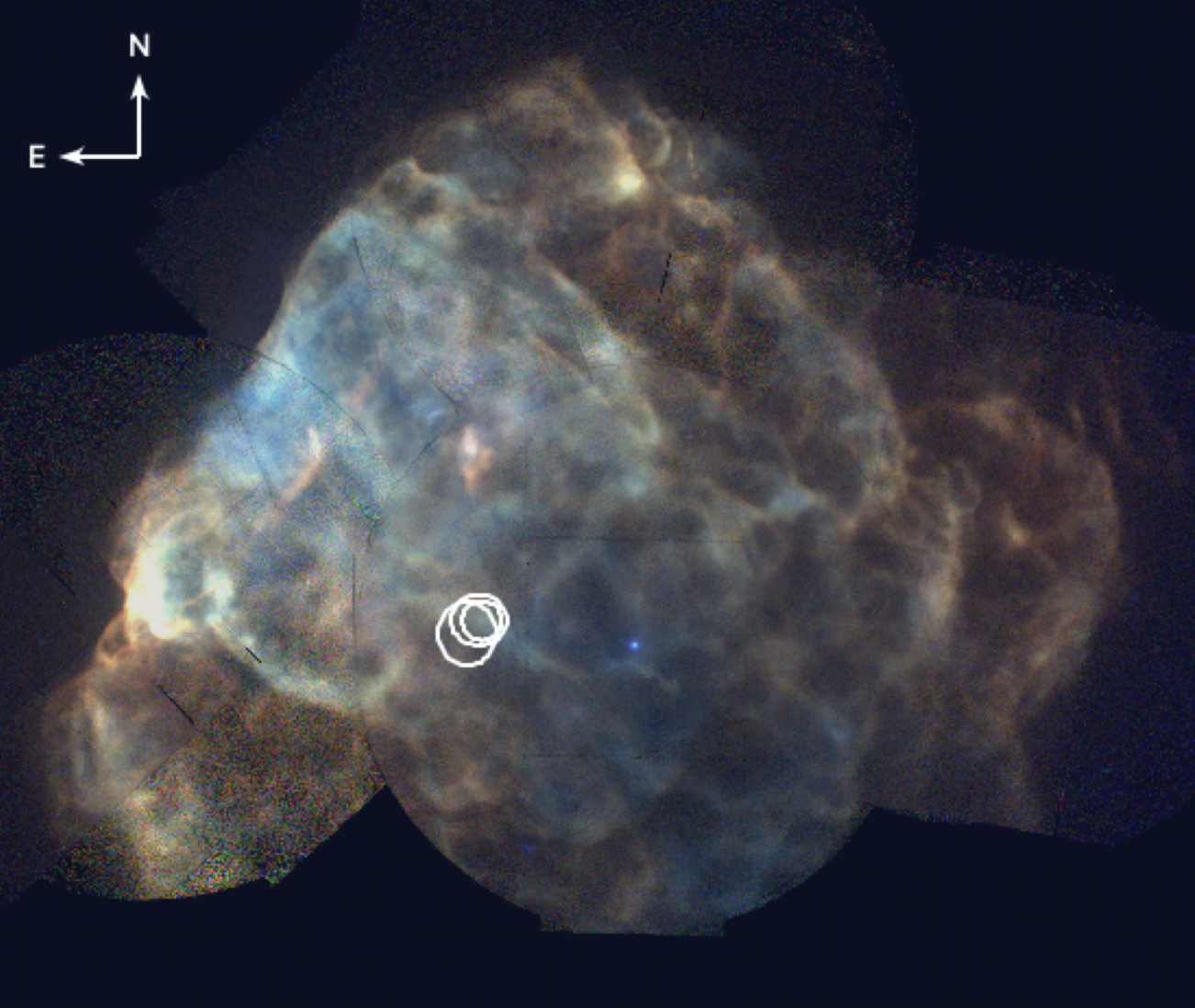The Swirl in the O-Rich Supernova Remnant Puppis A - Notes on Ghavamian et al. 2023
The Swirl
The paper “The Peculiar Ejecta Rings in the O-Rich Supernova Remnant Puppis A: Evidence of a Binary Interaction?” examines the supernova remnant called Puppis A, and in particular a small feature within this supernova remnant called “The Swirl”. The Swirl consists of a series of nested and optically emitting rings of high velocity. This feature was first identified in 1989, but not much work has been published on it since then. This paper uses the Wide Field Integral Spectrograph on the 2.3 m telescope at Siding Spring Observatory in Australia to investigate further what this Swirl actually is and how it is formed. They find that the outermost ring has a nitrogen-rich spectrum that is blue-shifted to 1350 km/s, and that there are smaller blue-shifted rings within the first that are mostly oxygen and move at 1000 and 750 km/s. The different ring structures are connected by material of different speed and composition. The total material is about 0.5 solar masses (at most) and is turbulent and shock excited. The authors suggest that the Swirl is a funnel or shadow carved into the supernova by a close, massive binary companion at the moment of explosion.
Supernova Remnants & Puppis A
Oxygen-rich supernova remnants emit in optical wavelengths, and their emission is usually associated with filaments and knots, and is likely to come from the shocked ejecta of a core-collapse supernova. Usually the optical emission comes from the interstellar medium ionised by the forward shock, but in the case of oxygen-rich supernova remnants, the interesting part is that the actual composition of the supernova ejecta can be studied. There are only a handful of such remnants, and Puppis A is one of them. It is a supernova remnant that is bright in X-rays, has a large angular diameter of about 50’ (the Moon has an angular diameter of about 30’) and there is a central compact object called RX J0822-4300 in the supernova remnant. Analyses suggest that it is a core-collapse supernova. The X-ray emission is dominated by the interaction with the interstellar medium, but several structures of oxygen, neon and magnesium have been identified. It is curious that optical emission has been detected from oxygen-rich material, since at an age of 3700 or more years the denser ejecta clumps should have dissipated. Puppis A is about 2.2 kpc from Earth (although it could be 1.3 kpc) and the physical size is about 2.3x2.9 pc.
What do they find in their Observations?
The Swirl is made up of different ionised elements such as hydrogen, helium, nitrogen, oxygen, sulphur, iron and nickel. And all the lines are detected at different, highly Doppler-shifted speeds.
- From Earth, the rings overlap in the Swirl, making them difficult to separate. However, the radial velocities and their composition make it possible to disentangle them.
- Furthermore, the Swirl is dynamic and highly clumpy, with a complex morphology.
- The outermost and largest ring moves at about -1350 km/s, an intermediate ring at -1000 km/s and the innermost and smallest ring at -750 km/s.
- Analysing the kinematics of the vortex, it becomes clear that this cannot be a simple limb brightening of expanding spherical shells, as in a normal supernova remnant.
The Main Conclusions
Based on the location, radial velocities and composition, it is very likely that the Swirl is indeed part of Puppis A. Furthermore, there are some observations that favour a supernova origin (rather than a progenitor wind or similar). These are also the main conclusions:
- The radial velocities are much higher than expected for a clumpy stellar wind.
- There is no redshifted counterpart, and the maximum velocity doesn’t exceed 1350 km/s, which is incompatible with a wide jet.
- The composition of the Swirl rings shows a progression of heavy element composition, consistent with layers from hydrostatic burning in a massive star.
- The radii and radial velocities are linearly related, consistent with a funnel-like expansion from a localised point.
- The Swirl kinematics are more consistent with a funnel than with a limb-brightened spherical shell model.
